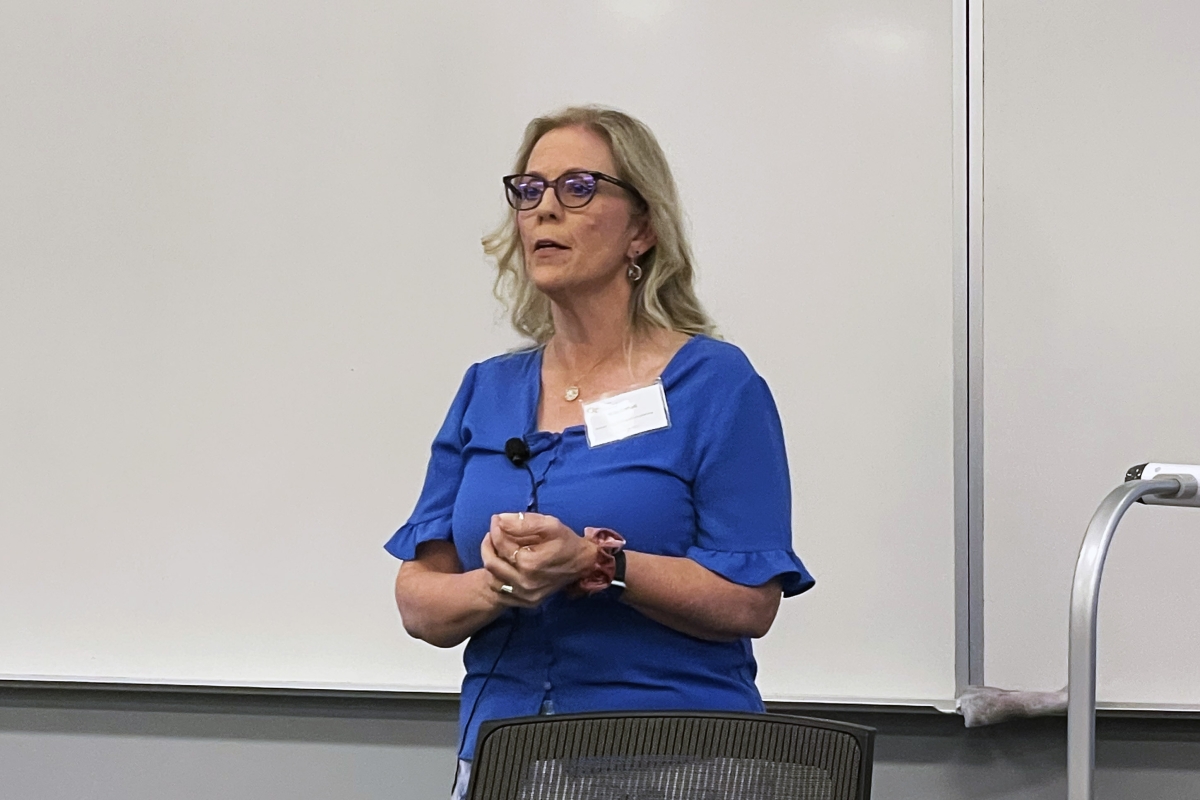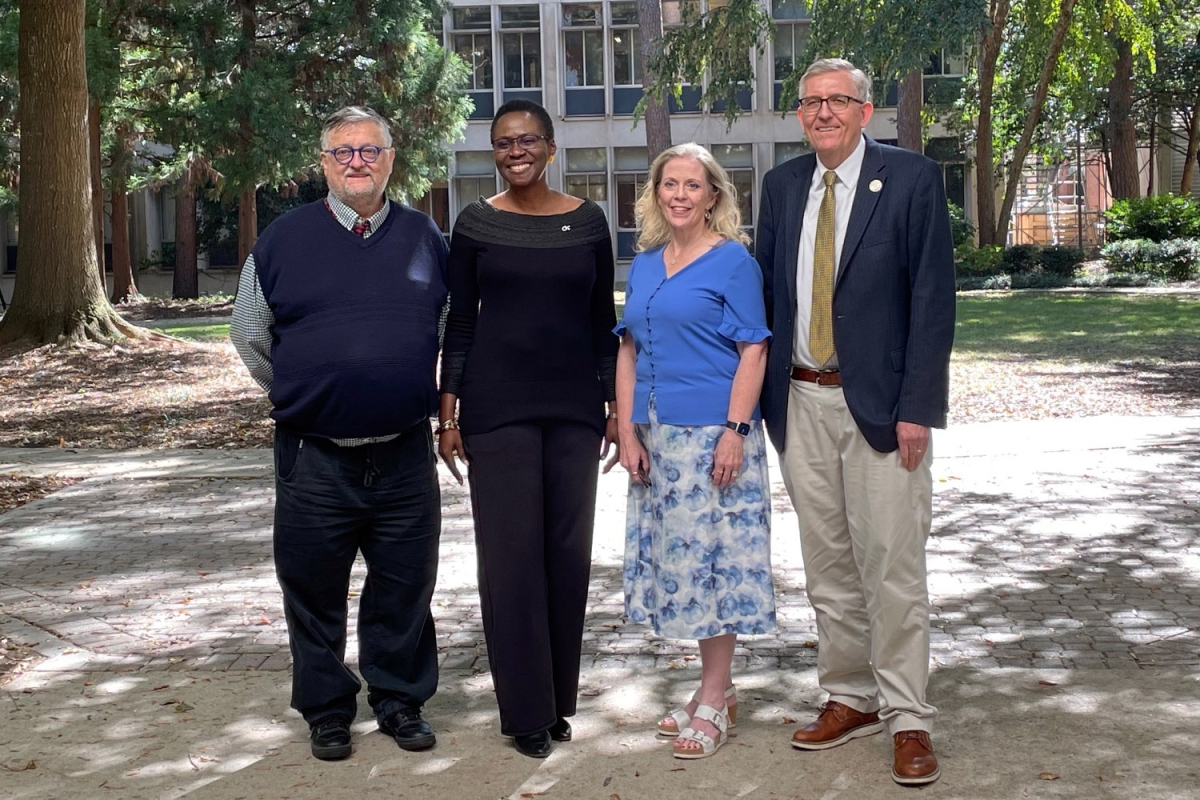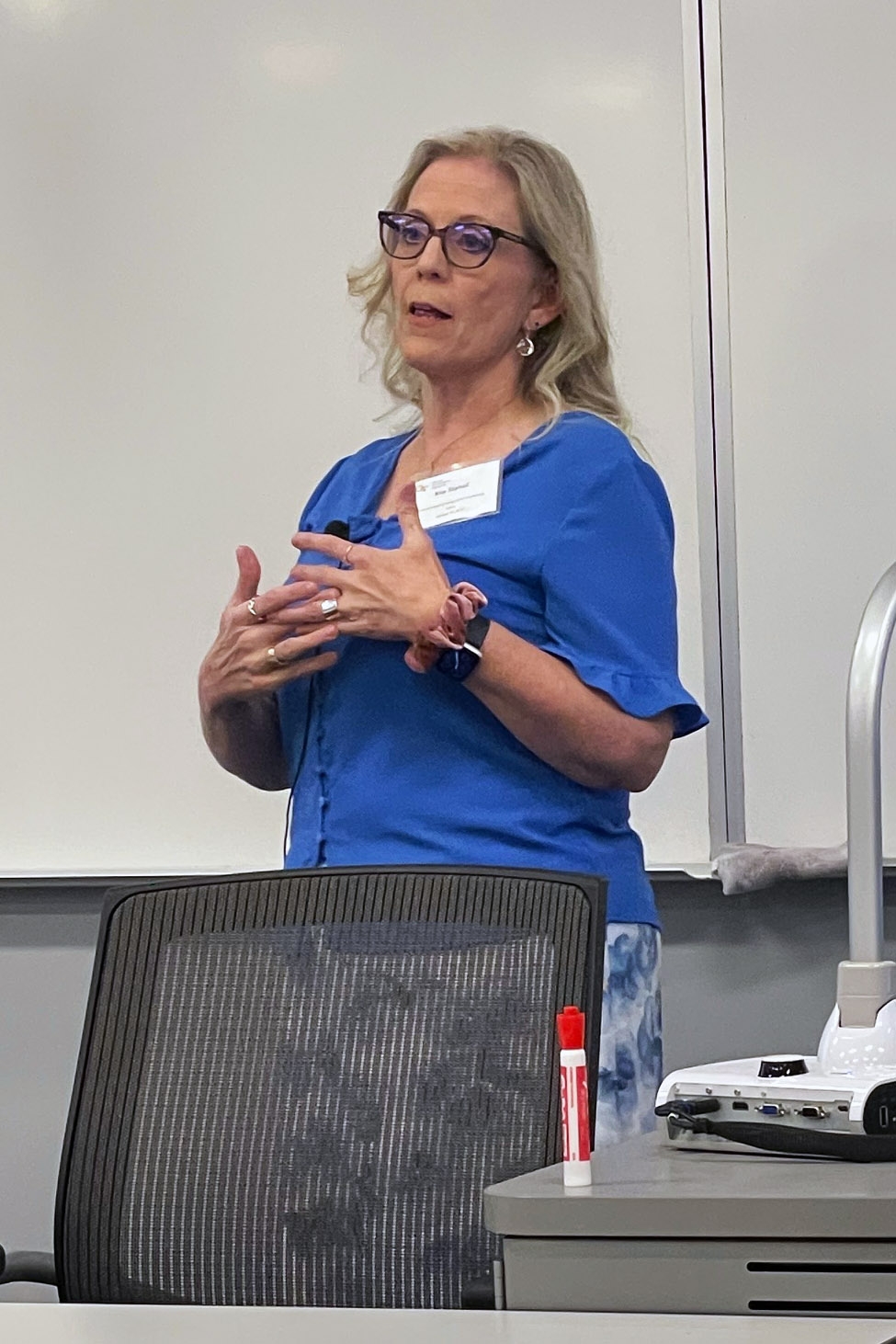Kimberlie Staheli is a world-renowned leader in the field of trenchless technology— but that wasn’t always her plan.
As the Fall 2025 speaker for the Hyatt Distinguished Leadership Lecture Series, Staheli shared with students how she learned from her failures and found an unlikely path to becoming an internationally recognized expert in her field.
Staheli, who earned a PhD in Geosystems Engineering in 2006, is the president and principal engineer at Staheli Trenchless Consultants.
She had a very different vision for what her future would look like as an undergrad studying mechanical engineering.

Growing up in Seattle, she dreamed of working for Boeing. But when her application was rejected by the aerospace giant, she had to change course. She focused on perfecting her interview skills to project leadership and confidence in any situation.
“My singular focus was to thrive in a job,” Staheli said.
She got her first job as a construction contractor, and it was admittedly not a great fit. Her manager even told her that she was an “Equal Employment Opportunity” hire, intended to increase diversity in the workplace.
At the beginning of her job, she was told to go out to the construction site and observe.
Staheli was determined to make the most of her time on the job. While observing, she became interested in a microtunneling machine, a new technology in the early 1990s when she started her career. In fact, her company owned one of just three microtunneling machines in the United States.
Microtunneling is a trenchless technique for boring a tunnel and then installing pipes underground.
Staheli began taking detailed notes and recording data about the machine to understand how and why it worked — and to learn from mistakes in the field.

Left to right: Professor David Frost, Associate Chair Adjo Amekudzi-Kennedy, Kimberlie Staheli, and School Chair Don Webster.
There wasn’t much information available at the time about these machines or how to improve the technology. As she learned more about the machine, she saw an opportunity to become a leader in an emerging field.
“I wanted to be the best microtunneling engineer in the United States,” Staheli said.
At 25, she founded her own consulting firm specializing in in trenchless pipeline techniques. She went on to earn a master’s degree in civil engineering from Mississippi State University and worked with a research team for the U.S. Army Corps of Engineers.
But her educational journey wasn’t yet complete. She recognized that there was a need for more technical understanding of trenchless technology and decided to pursue a Ph.D.
Through her extensive research, she discovered the work of renowned geotechnical engineer and professor G. Wayne Clough. She was inspired by his style of research wanted to learn under his guidance.
“That was my motivation for coming to Georgia Tech, which was one of the best decisions I ever made,” Staheli said.
The only problem? At the time, Clough was the president of Georgia Tech.
Staheli did not let that stop her. Though his schedule was packed with the administrative duties of a university president, she convinced Clough to take her on as a Ph.D. student under the co-advisement of Professor David Frost.
At Georgia Tech, Staheli focused her research on jacking force. Pipe jacking is a trenchless technique of pushing pipes through the ground. Her work culminated in a thesis that introduced a new method for predicting jacking forces in pipe jacking design.
“Her thesis is considered a seminal document on surface roughness for pipes,” said Frost, her Ph.D. advisor.
This year, Staheli was selected as the 2025 inductee to the North American Society for Trenchless Technology’s Hall of Fame. She is the 35th inductee and the first woman selected for the honor.
Staheli told students her theory that there are two kinds of leadership: passive and targeted. Reflecting on her career, Staheli said she has been able to succeed in both.
Passive leadership is when you don’t set out to be a leader, but you work hard, produce results, and make decisions that command respect. People recognize these qualities and are drawn to follow your example.
Targeted leadership is when you position yourself to be a leader. You learn the important qualities, show enthusiasm, and let others know that you want to lead. When there is a position that you want, you take steps to achieve it.
The commonality between passive and targeted leadership, Staheli said, is hard work.
She left students with the earliest advice she received from her father to succeed in life: “Work, work, work,” Staheli said.

